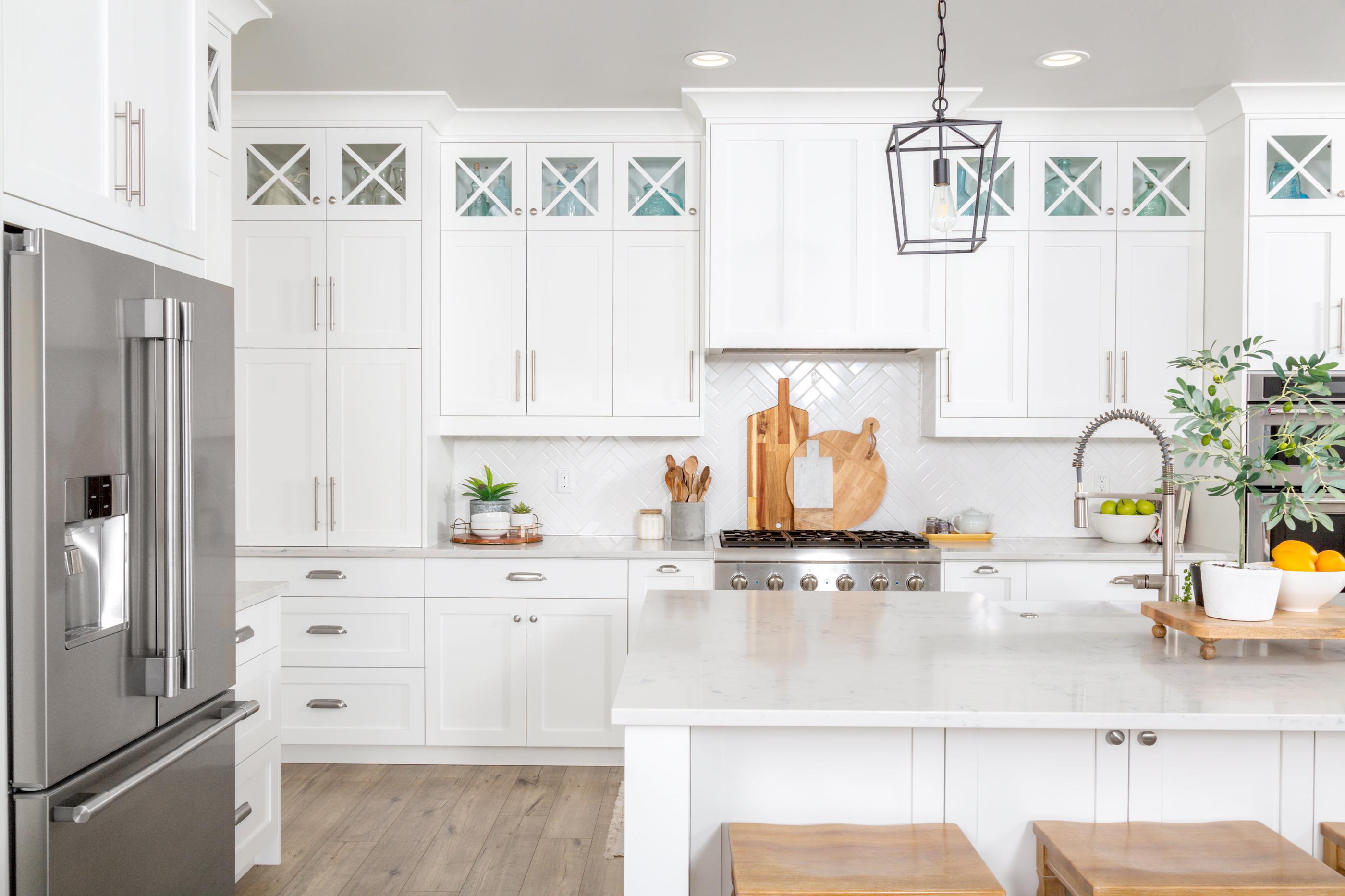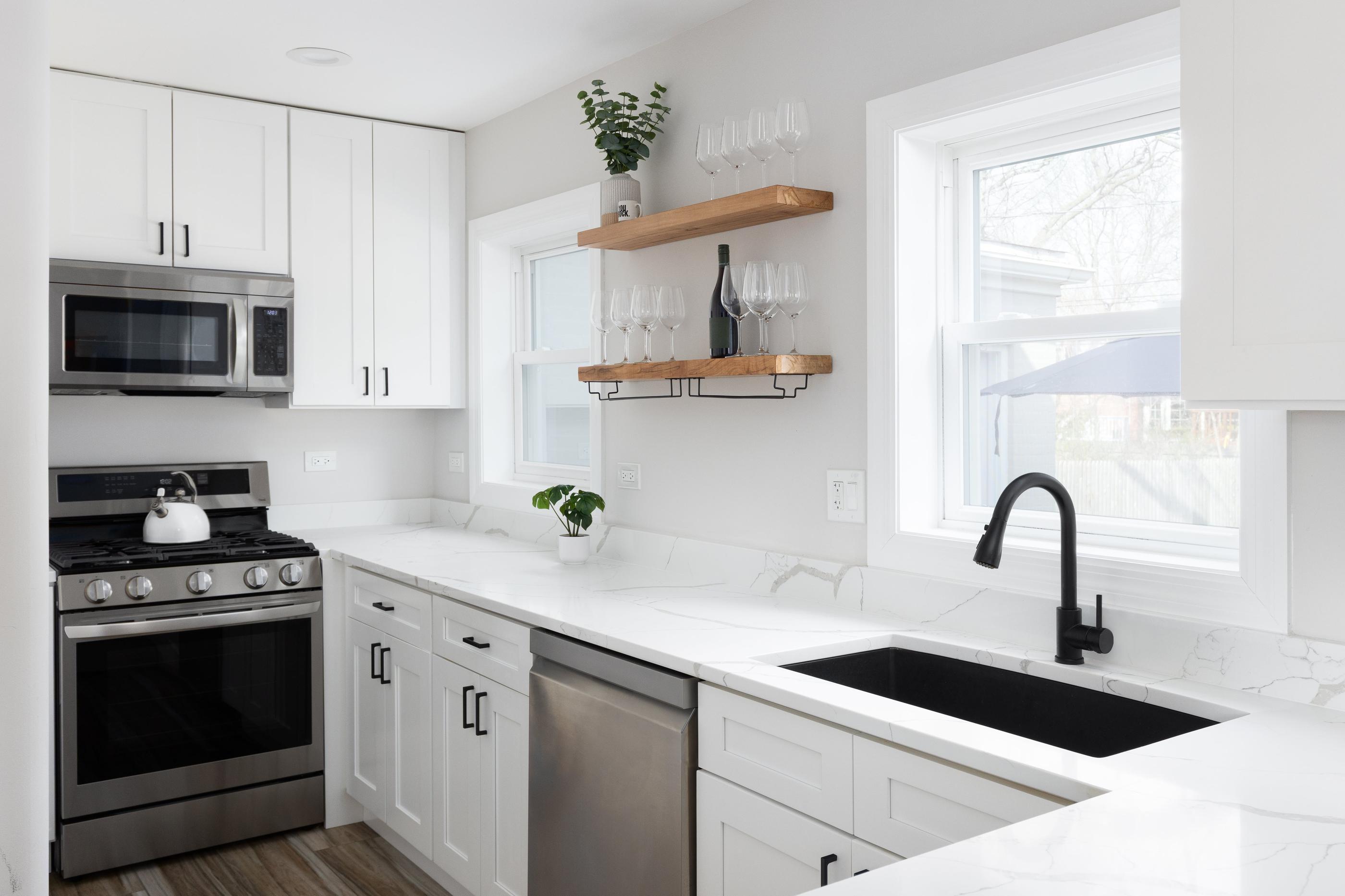An orderly kitchen simplifies shopping, cooking, and spending quality time with loved ones.
If you find yourself buying items you don’t need because you can’t see what you already have, you're wasting money that could be invested in smarter kitchen storage. Daily meal prep could go so much faster, as could cleaning.
Today, we’re learning how to organize a kitchen. We’ll cover where to begin, how to plan for your needs, and much more.
1. Identify the reason(s) for the clutter and disorganization.
List the areas affected by clutter and briefly determine why they’re in disarray. Here are a few examples:
-
The countertops are always cluttered with items that don’t have a dedicated home.
-
The drawer is in a jumble because everything inside is free-floating with no compartments.
-
The pantry is all mixed up because I am putting things back in a hurry.
-
The cabinets are disorganized because the shelves are too high and wide for the many small things they hold.
There’s likely to be a few areas you feel are out of your immediate control. (“I’m too busy to pay attention to where this goes” or “Everyone else in the house leaves things wherever they like.”) Yet, improving storage and creating a calmer, more orderly environment naturally sorts a lot of this out.
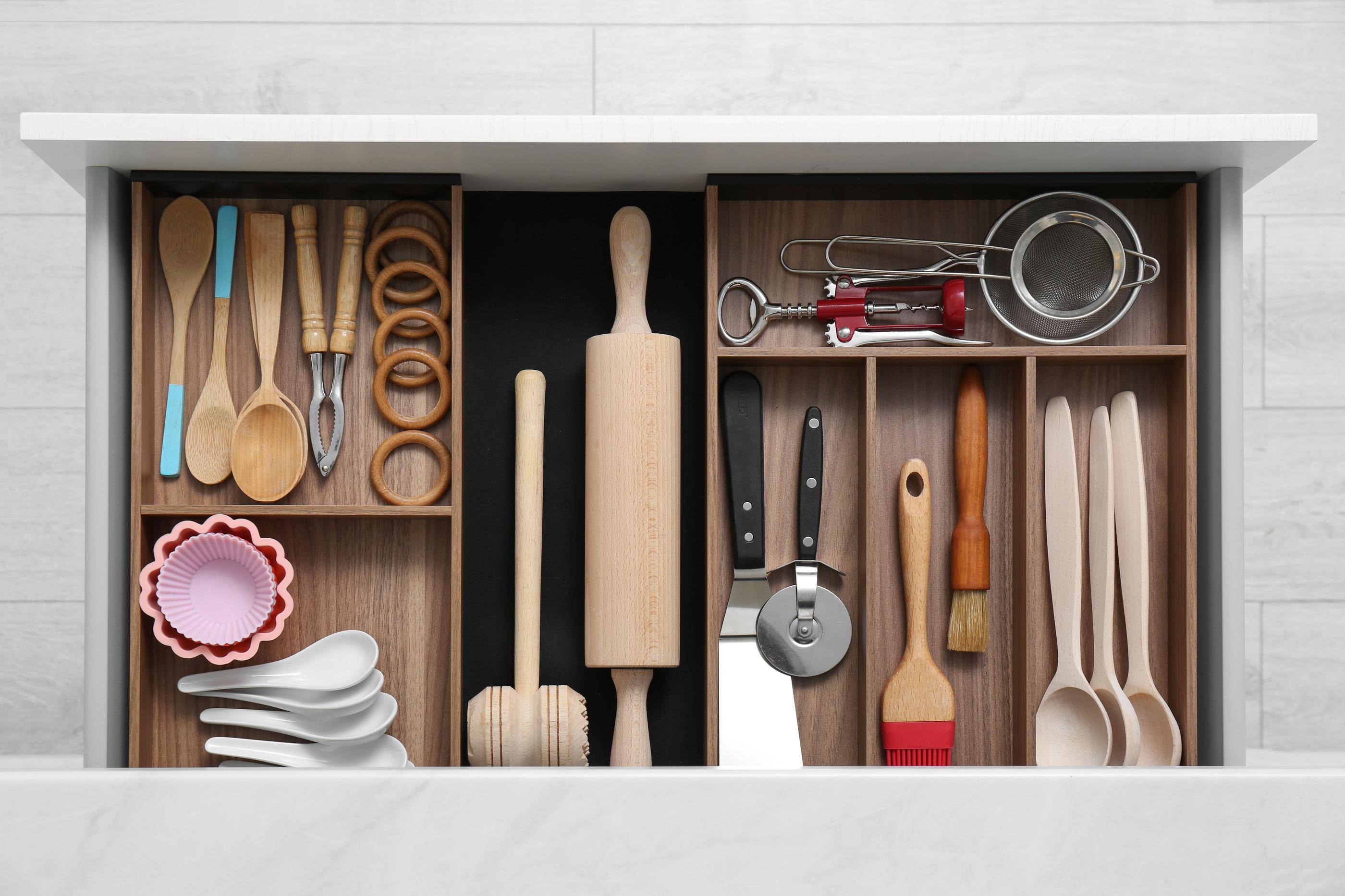
2. Purge the following items.
Unlike closets, where we struggle with the sentimentality or future potential of some items, kitchen purges are fairly straightforward.
Pull everything out of its current location and properly dispose of the following:
-
Scorched cookware, especially with nonstick coatings.
-
Food items with packaging in a poor state, such as stale crackers left open or the cracked plastic lid on a can of oats.
-
Expired food, from cans to whatever’s still kicking around the refrigerator past its date.
-
Near-empty cleaning supplies or old DIY mixes you didn’t finish using.
-
Dull, rusted, or bent cutlery that can’t be restored.
-
Stale spices that are discolored or clumped together.
Then there are items you can donate to a charity shop or thrift store:
-
Cooking gadgets you haven’t used in a year.
-
Bakeware, dishes, and cookware in decent condition that you just don’t need.
-
Extra water bottles and coffee mugs that collect in cabinets but don’t get used.
-
Appliances you rarely use, like that extra air fryer you got three Christmases ago.
After purging, vacuum out drawers, shelves, and cabinets, wipe them down, and prepare for a new system.
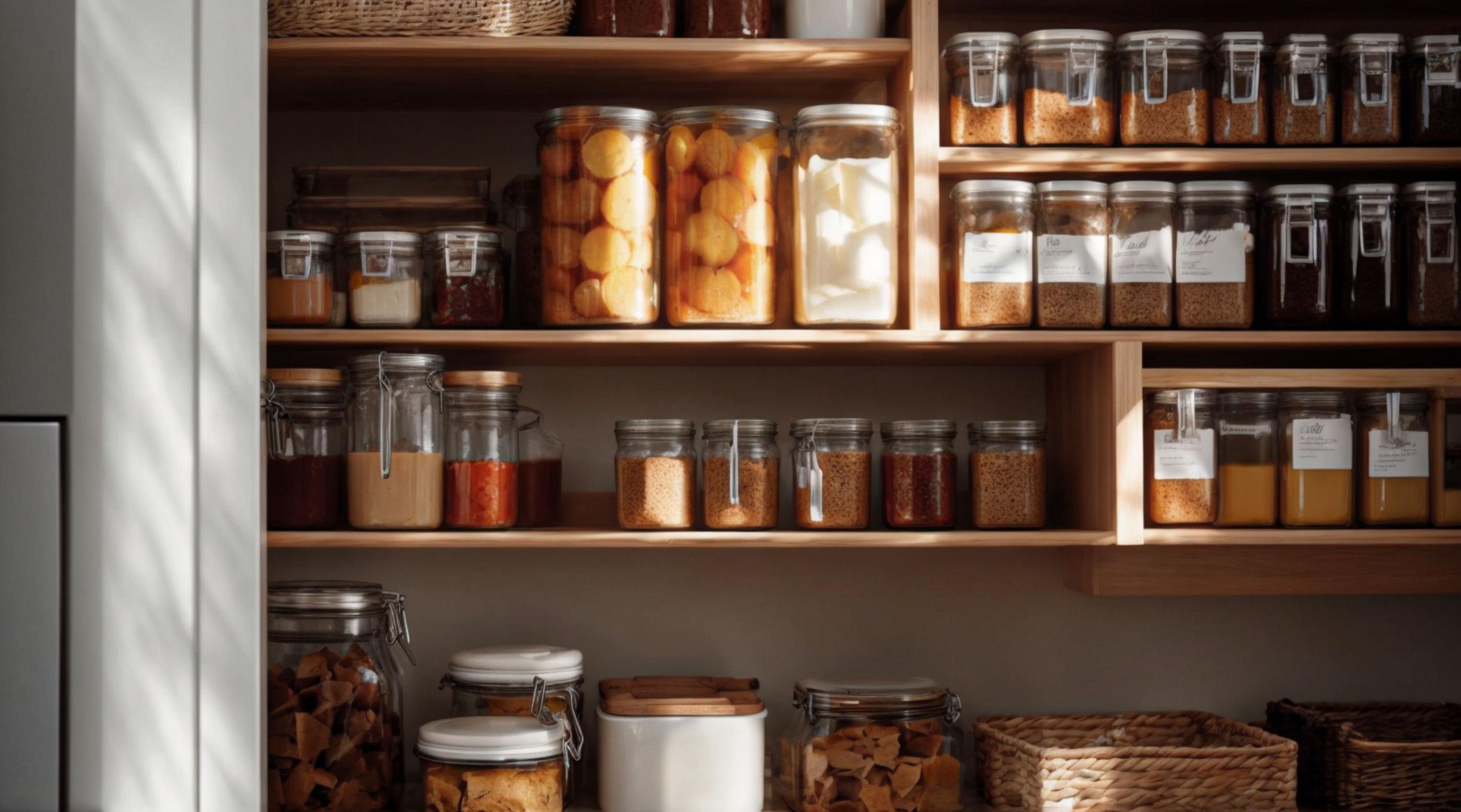
3. Devise your new storage and organization system.
Now you determine what product or new location will solve the issue.
For instance, a mess of pot lids taking over an entire cupboard can be sorted with a lid rack, instantly creating space for a neat stack of bakeware alongside it. Dog-eared boxes of cereal constantly tipping over are sorted with stable, airtight containers.
Here are a few common solutions for specific zones of the kitchen:
-
Cabinets: Shelves, turntables, racks, and drawer inserts.
-
Refrigerator and freezer: Bins and dividers.
-
Pantries: Risers, containers, can racks, and baskets.
Once you assess the efficiency created by these solutions, it will help you create new zones for everything. A pantry shelf that used to be dominated by cans can now hold all cans, plus a basket or two for your baking supplies.
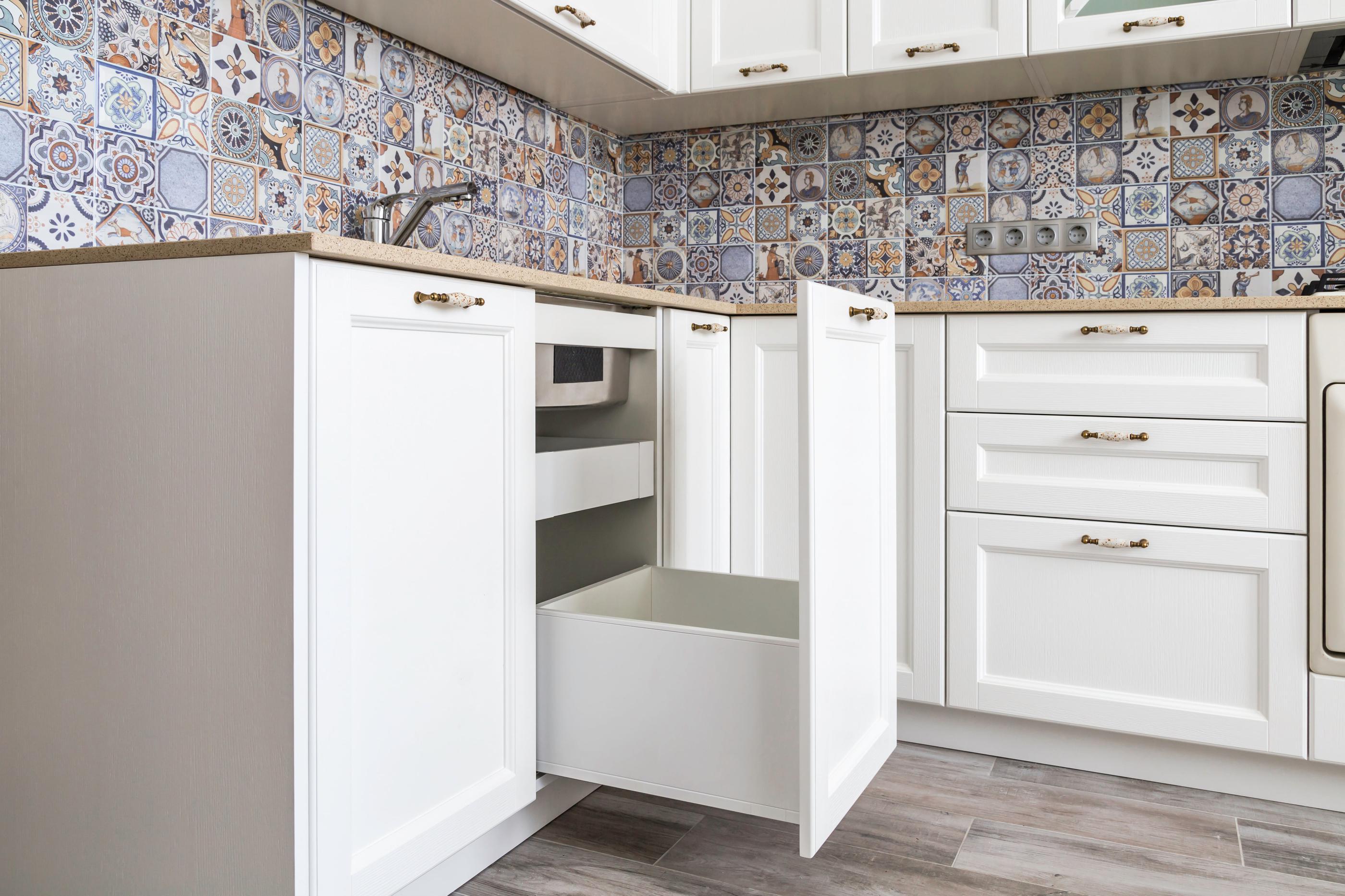
4. Identify larger, high-impact ways to save even more space.
Cleaning, sorting, and storing can be done any time, and make a huge difference. However, there are methods for completely transforming the storage capacity of your kitchen.
If you can’t follow through on these ideas now, make the ones you like best kitchen goals you’re aiming for in the next year:
-
Streamline appliances. How often do you really use that second oven? Couldn’t you buy a combination microwave/toaster oven/air fryer? Considerations like these add usable square footage to any kitchen.
-
Customizing cabinetry to your storage needs. Slimline pull-outs, shelving height adjustments, and deeper, two-tier drawers. If you don’t want to deal with a bunch of accessories, permanent solutions can clear up clutter for good.
-
Adding or replacing an island. If your kitchen layout can accommodate it, a new or optimized island can add more storage than you think. Plus, you’ll get seating, prep space, or maybe even a better location for your dishwasher and sink.
-
Remodeling the pantry. When we buy homes, we rarely inherit the perfect design for all of our needs, in every room. Redoing the shelving, adding tracks for roll-out wire baskets, and much more can triple a pantry’s useful space. This alone can help clear out cabinet clutter, too.
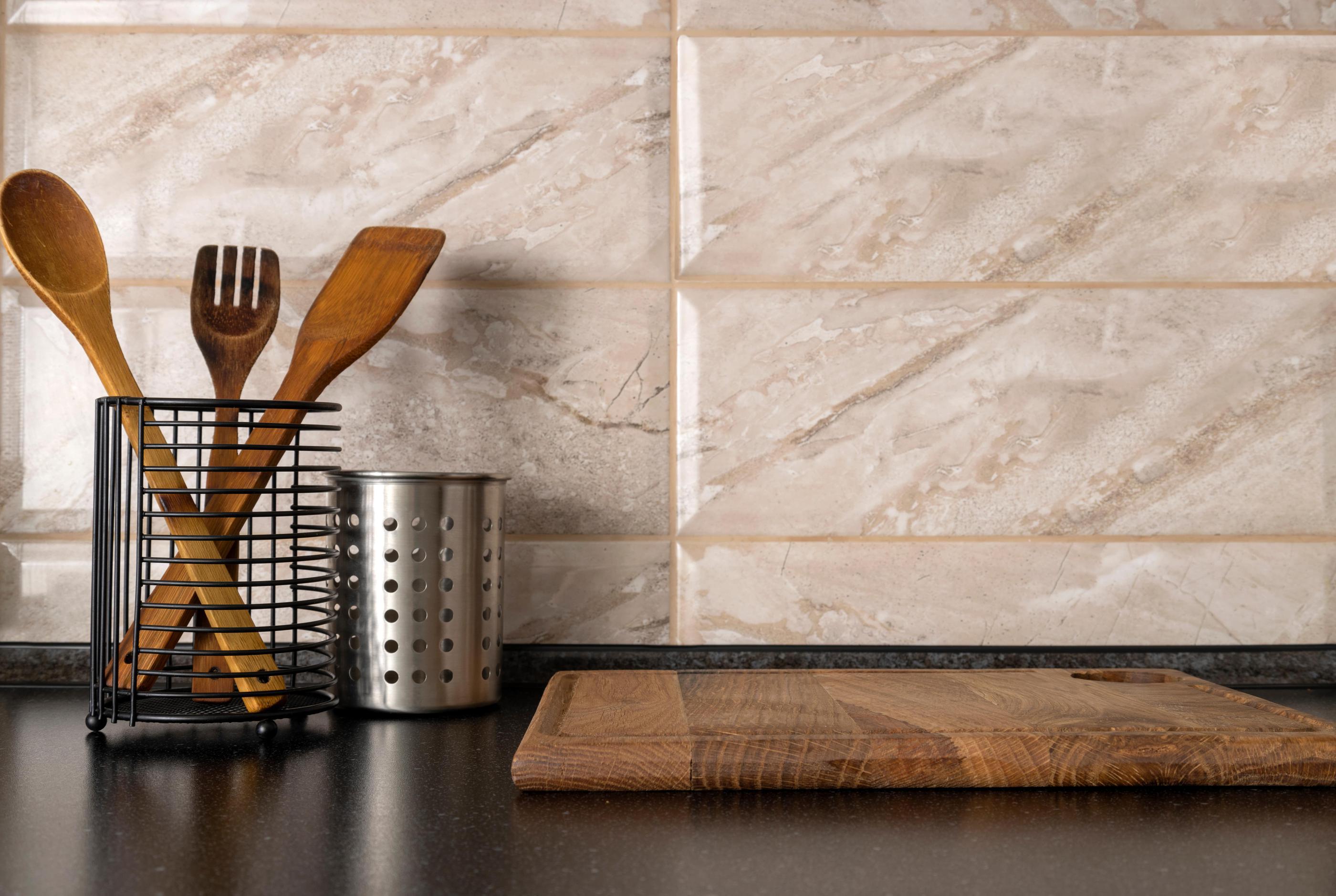
5. Equip your workstations.
The best tip we can offer you to keep the kitchen organized in the future is to prioritize your processes.
Set up neat areas with your most-used countertop items. The cooking utensils you use daily, the oil that starts every sauté, the cutting boards that you rely on for prep. Not only does it make clear what that space is for, but it supports a workflow that doesn’t see you scrambling all over the place.
Under-cabinet magnetic strips or hanging storage can hold your chef’s knives, the one must-have skillet or sauce pan, or your daily coffee mugs. This ensures you’re not using the countertop for absolutely everything you need.

Overwhelmed? Let a professional designer step in.
You don’t need grand remodel plans to be worth a designer’s time. Not at The Designery, anyway. We design, fabricate, and install custom organization solutions.
Go all-out with new cabinets, or double what you can get from your existing cabinets. Add a new island with seating and storage galore, remodel your pantry only, or shop for energy-efficient appliances that take up less space, too. Book your complimentary, no-strings-attached consultation now to discuss your options.

How to organize your kitchen FAQ
How do I decide where to put things in my kitchen?
Visualize different zones in your kitchen and put items near fixtures and features that are most relevant to them. For example:
-
-
Utensils and dishes can go in the cabinets between the stove and dishwasher.
-
Knives and cutting boards can go on the counter between the sink and the stove.
-
Your most-used pots, pans, and bakeware are in the drawers between the sink and stove.
-
Glasses and mugs can go in a cupboard between the refrigerator and the coffee maker.
-
What to use instead of a pantry?
Maximizing cabinet space with special inserts, dividers, or custom pull-outs and tiers can replace a built-in pantry. You can also add furniture, such as a large kitchen island or freestanding closet, to make more space for pantry items.
What are the 7 pantry zones?
After pulling out everything in your pantry and discarding what’s no longer good, group everything into one of these seven categories:
-
-
Oils, jar sauces, and condiments
-
Canned goods
-
Baking supplies
-
Dry pasta, lentils, and grains
-
Snack crackers, chips, bars, and cookies
-
Breakfast cereal, oatmeal, and pancake/waffle mixes
-
Pantry vegetables like potatoes, onions, and squash
-
How should a kitchen be organized?
A kitchen should be organized to support your workflows, from prepping to cleaning. Other considerations are keeping heavier items in lower cabinets and storing spices away from direct steam given off by stoves and dishwashers.
How often should I declutter my kitchen?
It’s best to do a full declutter and deep clean every two months. If you thoroughly optimize storage, you may be able to do a major declutter seasonally.

